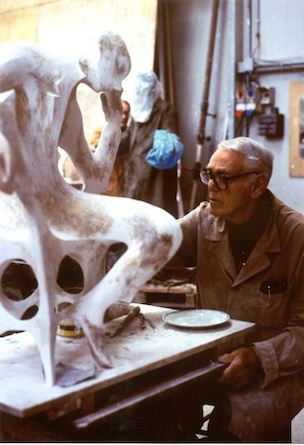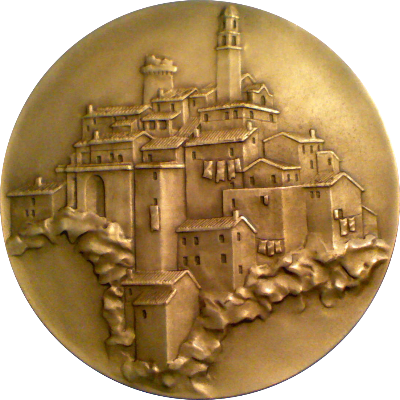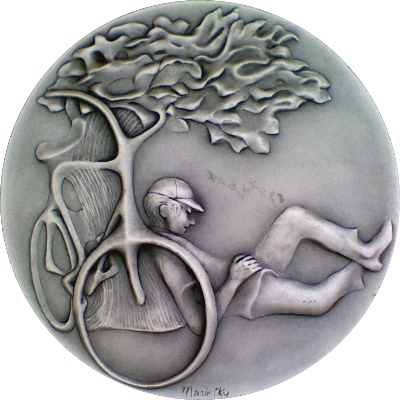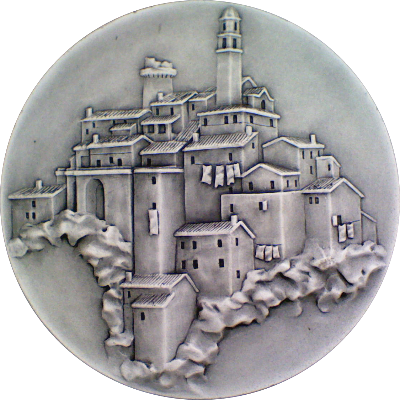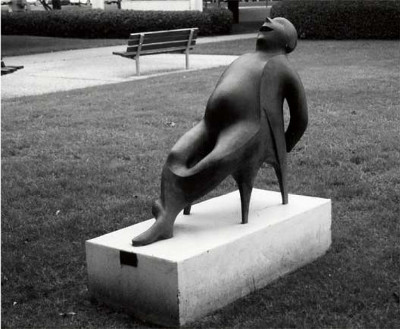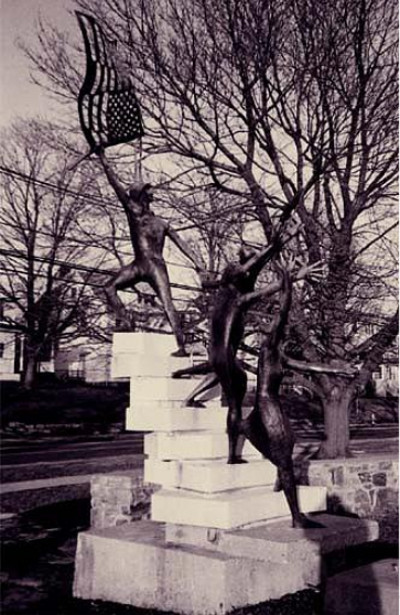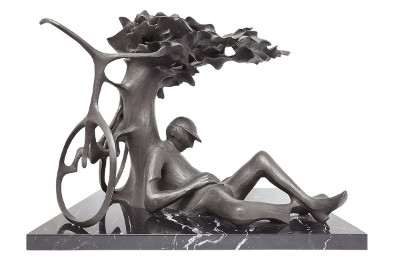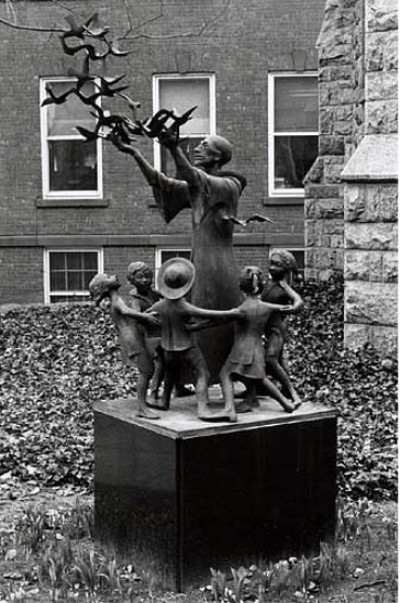Harry Marinsky was born in London to Russian parents who worked in high fashion. The family moved to the United States when he was only three years old. He attended the Technical High School in Providence where first encountered sculptural art and learned how to cast in sand and plaster. A scholarship allowed the budding artist to attend the Rhode Island School of Design in his home town of Providence as well as the Pratt Institute in New York City. As a consequence of his training he was well versed in both fine art and commercial design.
At age twenty-five, right out of college, he became Art Editor of the "American Home" and "Country Life" magazines for which he painted many cover illustrations. He slowly transitioned into a free-lance career by also illustrating for "House Beautiful," "House and Garden," and "Women's Day" magazines and devoting himself to painting and sculpture in his studio.
His first public exhibition was at the Montrose Gallery in New York as part of the "30 American Artists" group exhibition in 1940. First critical acclaim for Marinsky's sculpture followed in 1945 for a group of seven figures titled "One War - One Peace". The group depicts the horrors of war and what remained after its wake. Included in the group is Rape which shows a woman with a skeletal frame being raped while a thin child falls to the ground beneath her and her attacker.
In 1946 Marinsky left New York City for the rural town of Rowayton in Connecticut. The change in pace allowed him to pursue varied interests in landscape design, architecture, and gardening while still working as a painter and sculptor. Works from this period yielded his first solo exhibition at the Eggleston Gallery in New York in 1951.
In 1961 Marinsky went on a sabbatical and visited 16 European countries, creating a series of watercolor landscapes. The trip clearly left a deep impression because he went back to Italy in 1968 and this time it turned out to be a much more serious love affair than the sabbatical trip. A visit to the Tomassi Foundry in Pietrasanta had convinced him that his future lay in Italy. In 1972, Marinsky purchased a Tuscan farmhouse in the village of Capriglia and this is where he would spend the rest of his life.
His works are part of several private and public collections, including: the Hunt Botanical Library, Carnegie Mellon Institute, Pittsburgh, PA; York University Museum; Porras Building Complex, Midland, TX; PCX Corp., Oklahoma City; Public Library, Dallas; The Listener and Alice in Wonderland, 8 sculptures, The Museum of Outdoor Arts, Englewood, CO; Westmoreland Museum of Art, Greenberg, PA; Montclair Art Museum, NJ; Commedia dell'arte, Harlequin Plaza, Englewood, CO; San Francisco, Paris and Rivo Torto, Assisi.
Marinsky died in 2008, almost 100 year old.
